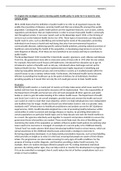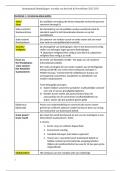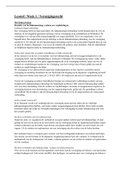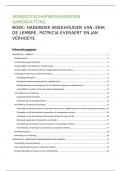Essay
Distinction - BTEC Unit 8 Promoting Public Health in Health and Social Care(P1,P2,P3,P4,M1,M2,M3,D1)
- Institution
- PEARSON (PEARSON)
This document includes the following achieved criteria for Level 3 Health and Social Care Unit 8 Promoting Public Health: P1,P2,P3,P4,M1,M2,M3,D1. Some criteria may be grouped together but it is all achieved. I own everything written except appropriately referenced quotes or facts, with the refere...
[Show more]







